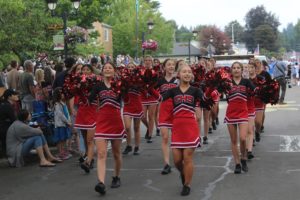As a vision of the long-awaited Camas-Washougal Community Center starts to take shape, one component that seems to be a must-have is some sort of replacement for the now-shuttered Crown Park swimming pool in Camas.
A community center committee recently compared three possible versions of the future center. All three options included a recreation pool, and two of the three also had competition pools and indoor walking tracks. Though there is no consensus on many components of the planned community center — including how it might be funded or where it might be sited — the one thing most committee members can agree on is that they need to keep all their options open.
“They basically said, ‘Let’s lay it out for the largest options,'” Camas City Administrator Pete Capell said. “It’s easier to take things away because you don’t want them or can’t afford them than it is to add them to a site.”
For the moment, the committee’s “go-big” option is a 87,000-square-foot center with a 7,500-square-foot recreational pool, an eight-lane competition pool and an indoor walking track. Early estimates pin the price tag for this “all the bells and whistles” community center at more than $59 million. But, like funding options and site locations, these figures are all in flux as the cities take early steps toward a long-awaited gathering place.
“These are big numbers. We’ll have to see what is feasible and what the community can support,” Washougal City Administrator David Scott said.

